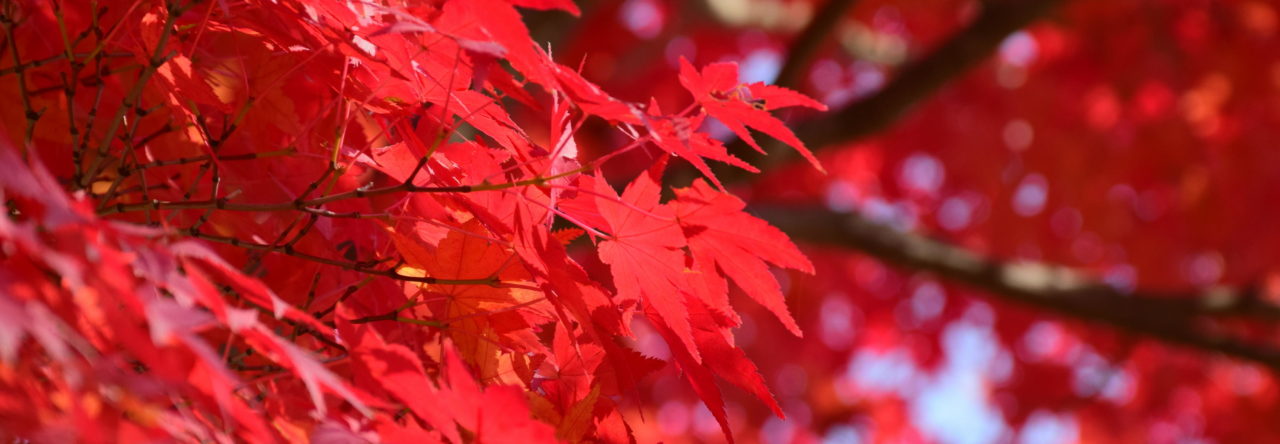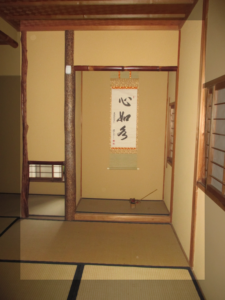Lament has been expressed that Yamaguchi Sensei (1924 – 1996) did not leave behind instructional material such as a video or book. I certainly agree with that. William Gleason and Stan Pranin have discussed the remarkable technique of Yamaguchi Sensei. It occurred to me that I had some material to offer about Yamaguchi Sensei from notes I kept while practicing at Hombu Dojo from 1973 to 1980. Yamaguchi Sensei taught a yudansha (black belt) course annually. The figure and text given below were taken from material distributed at one of these courses in 1973. The first attempt at translating the figure was done by my wife, Kinuyo Kraus, a native Japanese language speaker. Then, I prevailed on colleagues originally from China to review and interpret the figure, because some of the Kanji are quite old. I would like to thank Professor Sam Wang and Dr. Yan Ding (who lived in Japan for three years), both of the University of Mississippi, for their kindness in offering interpretations of some facets of the figure.
Category: Uncategorized Page 10 of 11
Robert W. Smith was one of the most important American writers on Asian martial arts, particularly those of Taiwan (and those mainland teachers who settle in Taiwan after the 2nd World War). He was a powerful man, with a background in judo, wrestling and boxing. After serving with the Marines, he joined the Central Intelligence Agency, serving in Taiwan from 1959 to 1962. While there, he undertook a peripatetic study/entry into a number of Chinese martial arts schools. The result of this three years survey of teachers were outlined in a number of his books. Most notably, Smith became a student of Zheng Manqing, an artist and innovative Yang Taijiquan instructor. Zheng, a master of a number of traditional Chinese arts, was an art instructor to the family of Chiang Kai Shek.
Smith was an important figure due to his genuine achievements in Chinese martial arts and more so, due to his writings: he brought some wonderful teachers to the attention of Western practitioners. In addition, his writing, itself, was old-school, with a sense of humor and wit. To be sure, there were times that he was both pompous and verbose, but he was one of the first writers on martial arts, after E.J. Harrison, who actually brought these people to life.
I received a set of related questions on licensure and succession within koryū:
- What are your thoughts on koryū that predominantly only give out one menkyō kaiden, essentially declaring that person to be sōke?
- Would that mean the rest of the senior practitioners are not allowed to teach or open their own school, since they didn’t achieve the highest possible teaching license?
- What’s your thoughts on those who stay for decades, even though they would never receive a full teaching license, or how about other schools that might take a person 30, 40 or 50 years to get a license. Does a practitioner in one of these schools ever question why it needs to take so long, even though they have already learned and mastered everything there is to know, but they are unable to break away because they would lose legitimacy or recognition to be a certified instructor?
- Then there are those that face discrimination whether it is openly shown or not. Only Japanese people or people the sōke likes ever get promoted. What’s your thoughts on that?
This is an ostensibly simple set of question that quickly becomes complex. In what follows, I address certain questions as if talking to someone specific: “you,” in other words. I do not mean the person who asked the initial questions. It’s a rhetorical device only.
Londoners, says the Daily Mail, will presently be able to witness a striking object lesson, which, if turned to proper account, might be the means of suppressing the hooligans who infest certain London districts. A remarkable troupe of Japanese performers having arrived for the purpose of exhibiting their skill at the Alhambra. Smiling Japan used to possess hooligans as desperate and as defiant as any of those in the metropolis, but Japan has a means of dealing with them.
The three men who are to perform at the Alhambra are champions in the art of “jujitsu,” and are pupils of the celebrated Jigoro Kano, ex-director of the higher normal school of Japan. He is the founder of the system, and has established schools where the art is taught, his ambitions and object being that the better (and unathletic) classes of Japan may be able to give a good account of themselves, if molested by muscular ruffians, either abroad or at home, and thus maintain the reputation of the old samurai or fighting class of Japanese feudal times.
By Ellis Amdur & Lance Gatling
The Ancestors of Takeuchi Santo-ryū
This extinct jūjutsu ryūha was founded by the Yano family, which, for generations, operated a famous jūjutsu dōjō in the Higo domain (currently, the area around the city of Kumamoto on the western Japanese island of Kyushu). Its name denotes its origins: santo 三統 means ‘three traditions’, in this case, two lines of the Takenouchi (AKA Takeuchi)-ryū active around Higo, and a third tradition either Araki-ryū or a line of Takenouchi-ryū strongly influenced by the former. The two lines of Takenouchi-ryū are classified by Takeuchi Santo-ryū as the Sakushū tradition, which is the home district of the Takenouchi family, and the Kobayashi tradition which traces back to an early shihan of Takenouchi-ryū. In a document among the personal effects of Shimada Hideki, last known instructor of Takeuchi Santo-ryū, various sections of the Takeuchi Santo-ryū mokuroku are designated as descending from either/both the Sakushū or Kobayashi kei (lines), others from the Araki-kei, and some as ‘unique to Takeuchi Santo-ryū.’
Jeffrey Mann wrote a response to my last post: “If I understand him correctly, he sees the reason for training in a koryu to be for the sake of the koryu itself, not the people in it or for the sake of historical archiving. However, our actions on behalf of an entity (like a nation) are usually for the sake of the people who live, or will live, in that entity. Doing something good for the entity itself, when it becomes the telos itself, seems misdirected. My contributions to a company, university, or nation are for the well being of its members and, hopefully by extension, the world. This seems to be the model of modern budo folks like Kano, Ueshiba, Doshin So, etc. This is more than pursuing the “Way” for myself alone. I don’t get what Amdur perceives to be the telos of the person who says, “I train for the ryu,” as he does.
What are the alternatives Mr. Mann offers to ‘training for the ryu?’ Let us first address ‘historical archiving.’ Without a doubt, this must be part of one’s involvement in any traditional martial art; otherwise, why train in culture specific, archaic combative methodology with weapons that will, perhaps, never be used again? However, to regard this to be the primary role of the ryu and its members, as exemplified in the phrase mukei bunkazai (‘intangible cultural treasure’), is problematic.
This essay is prompted by the following note from Mark Tankosich: A while back, I saw a Facebook post/response where you wrote something like, “I’m either Araki-ryu 24/7, or I’m not Araki-ryu at all.” First, perhaps I am mis-remembering or misunderstanding, so I’d ask you to elaborate. Secondly, and more my question, what does this mean for someone like yourself who does more than one koryu art?
Why study a koryu? Many, if not most, view it as a mukei-bunkazai (‘intangible cultural treasure’). It is envisioned like a mammoth, frozen under tundra ice, that somehow is revived and exists like it did millennia in the past. As soon as this concept is voiced, the endeavor fails.

